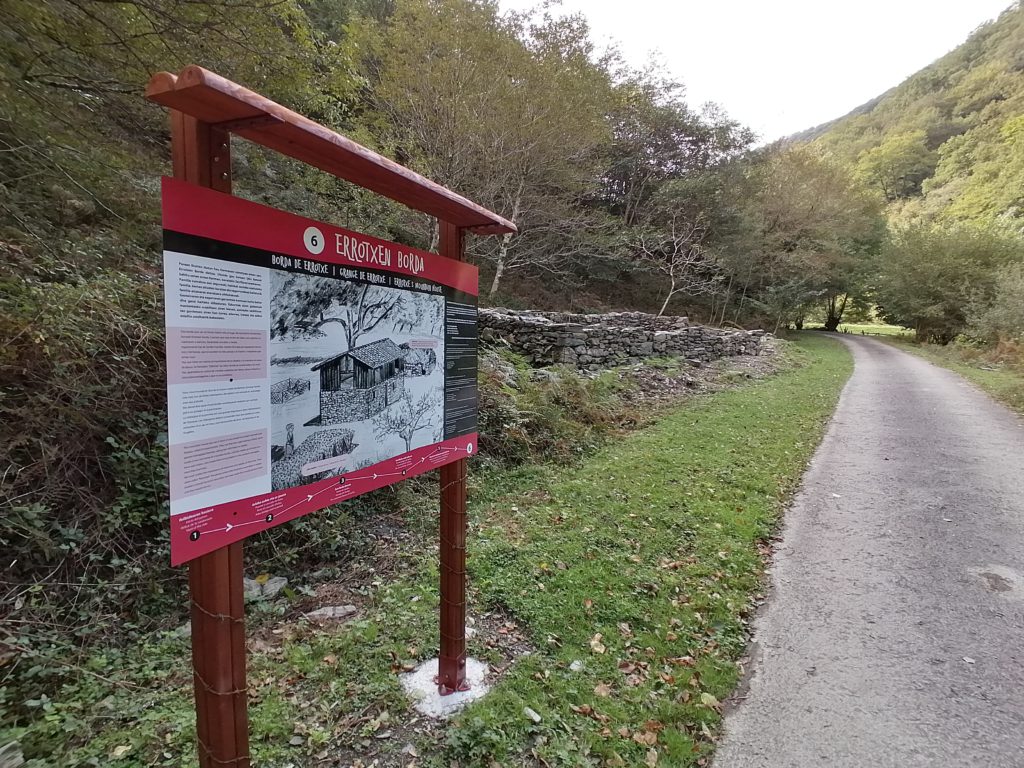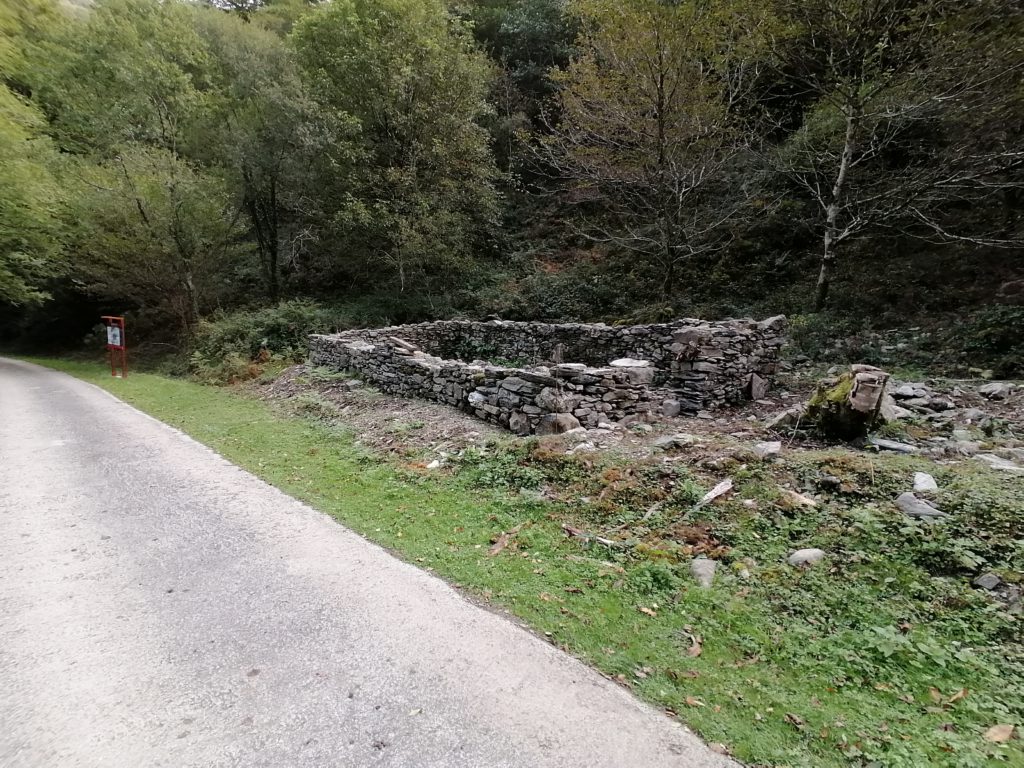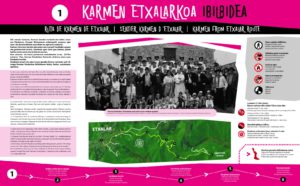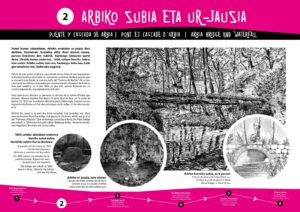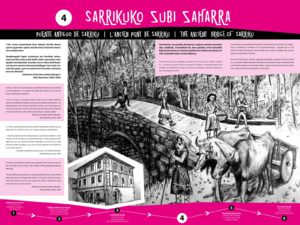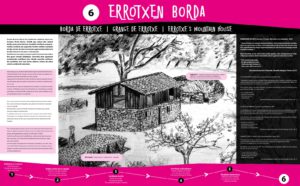
¿Are you fancy to learn about Karmen’s childhood places?
In the “Karmen Etxalarkoa”’s track, you can do the route to the Karmen’s supposed house. There are six panels throughout the trip, from the culture centre to her house, “Errotxen Borda”. During this beautiful route, different mentions are made about the Karmen’s period, the lifestyle and past events.
Some parts of the track, which are the most beautiful, go from the old “Baztan path” where wonderful places and interesting heritage are available.
Don’t hesitate and do the “Karmen Etxalarkoa”’s track.
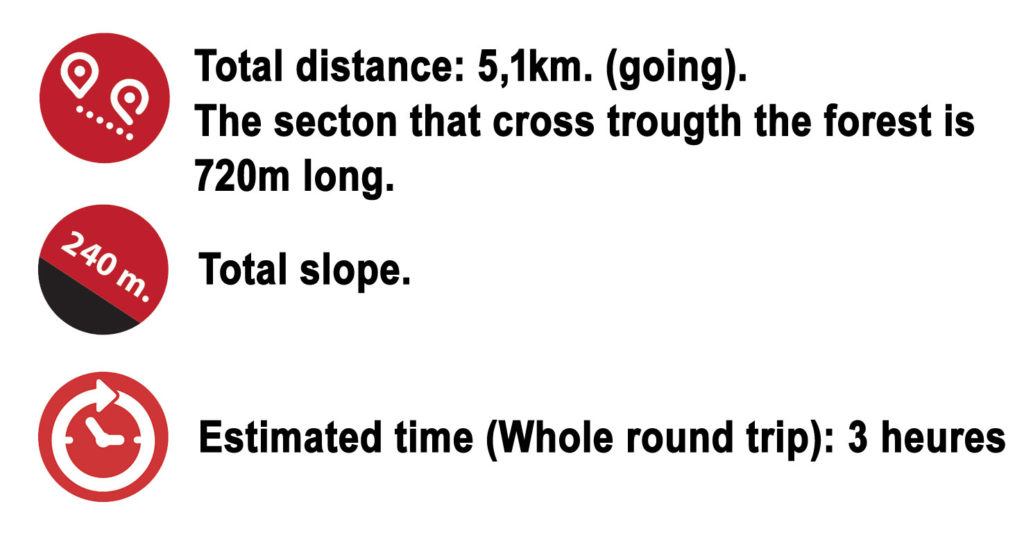

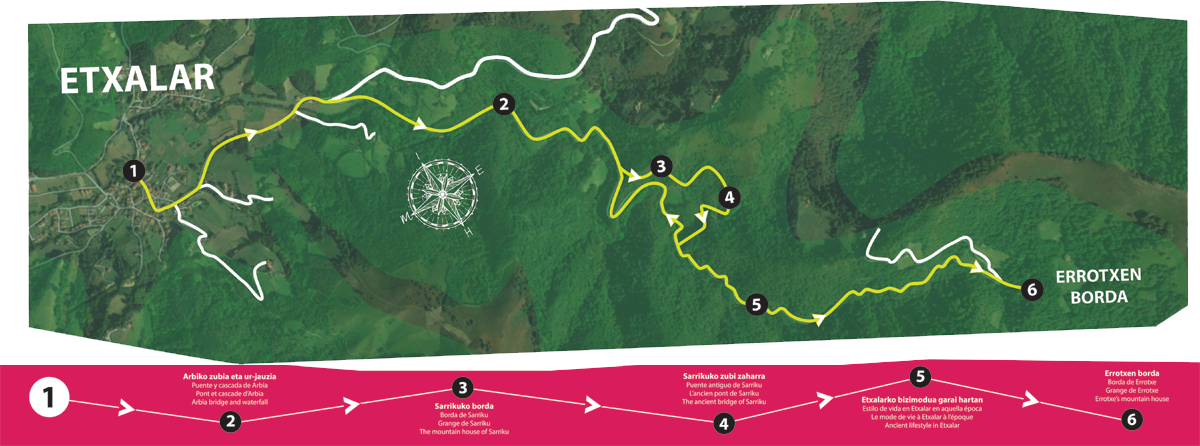

1º PANEL: KARMEN FROM ETXALAR ROUTE
It seems that at the beginning of the XIXth century, a girl named Karmen lived in Etxalar, who became known thanks to the novel by Prosper Merimée and famous thanks to Bizet's opera years later.
It is known that Karmen lived on the farm "Errotxen borda", in a neighbourhood called "Larrapil Sarriku" and when she was a young girl, she was kidnaped by gypsies and taken to Seville on the night of a flood.
In her honour, and with the aim of pointing out her Basque roots, on the 17th of September, 2017 the village of Etxalar performed the pastoral "Karmen from Etxalar".
We would like to show you the town of Etxalar at the time of this brave and free woman through the route "Karmen from Etxalar", carried out with enthusiasm and in a community work.
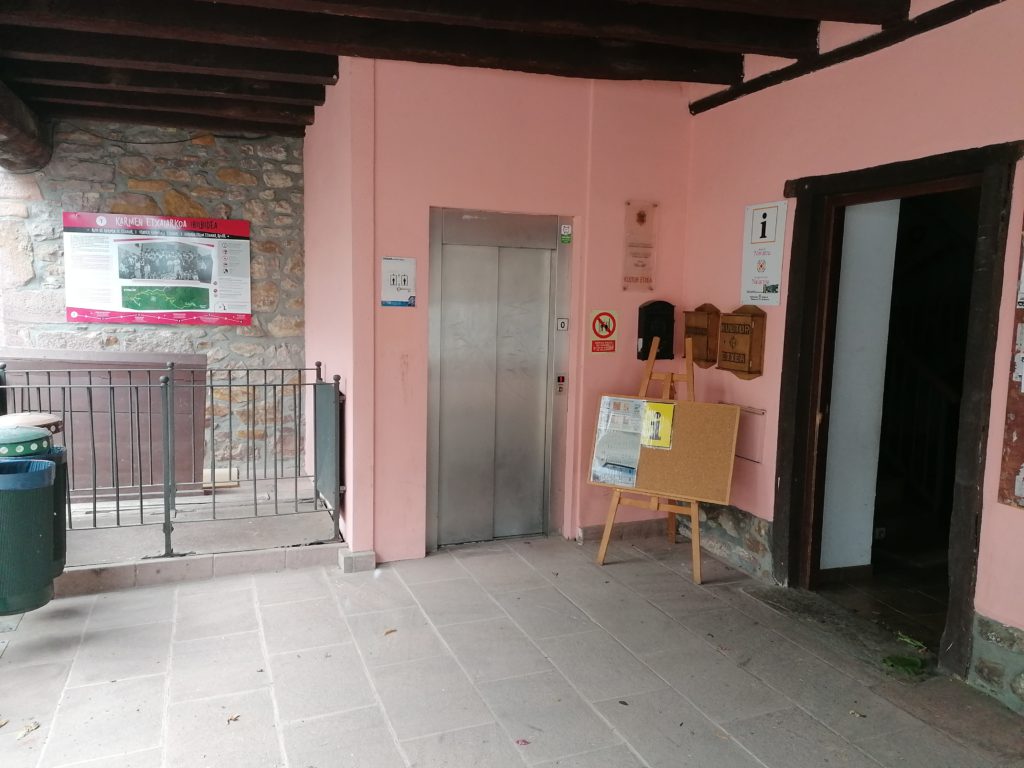
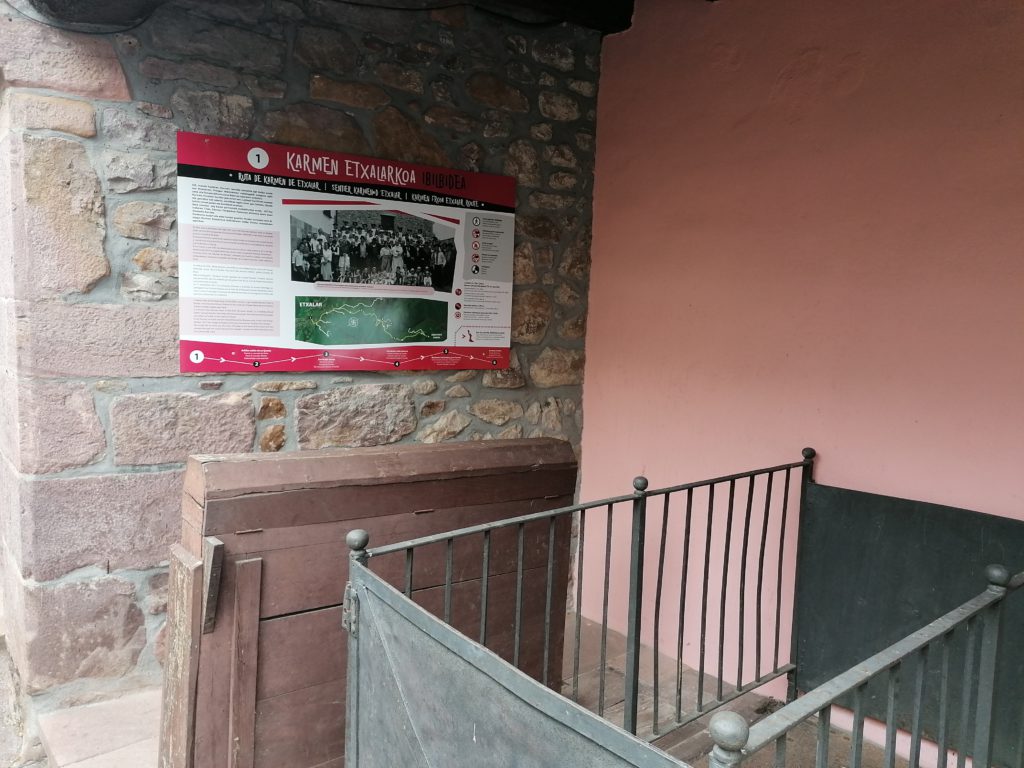
----------------------------------------------------------------------------------------------------
2º PANEL: ARBIA WATERFALL AND BRIDGE
Behind this panel is located the Arbia waterfall, that probably was often seen by Karmen from the bridge that passes in the front, which was part of the “Pathway of Baztán”.
Due to damage caused by a flood, the Arbia bridge was rebuilt in 1804 since this path called "Baztango Bidea - Route to Baztan" was important, the main one in the valley.
The bridge was rebuilt in 1804 due to a flood. Move to the bridge and see the Stone!
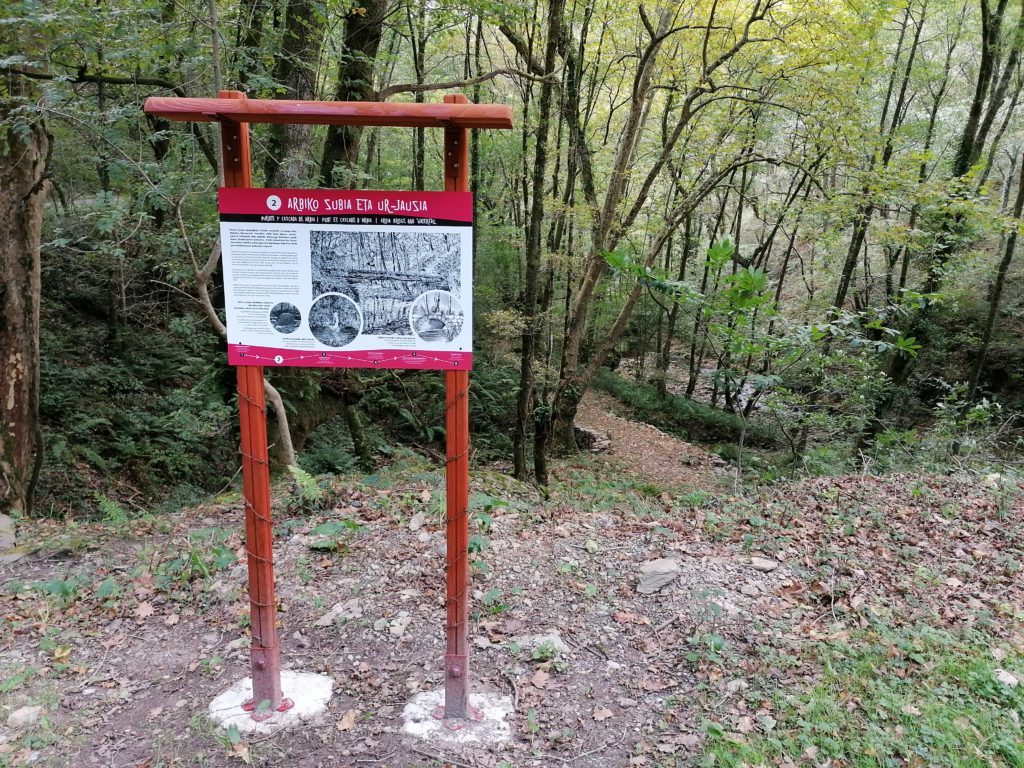
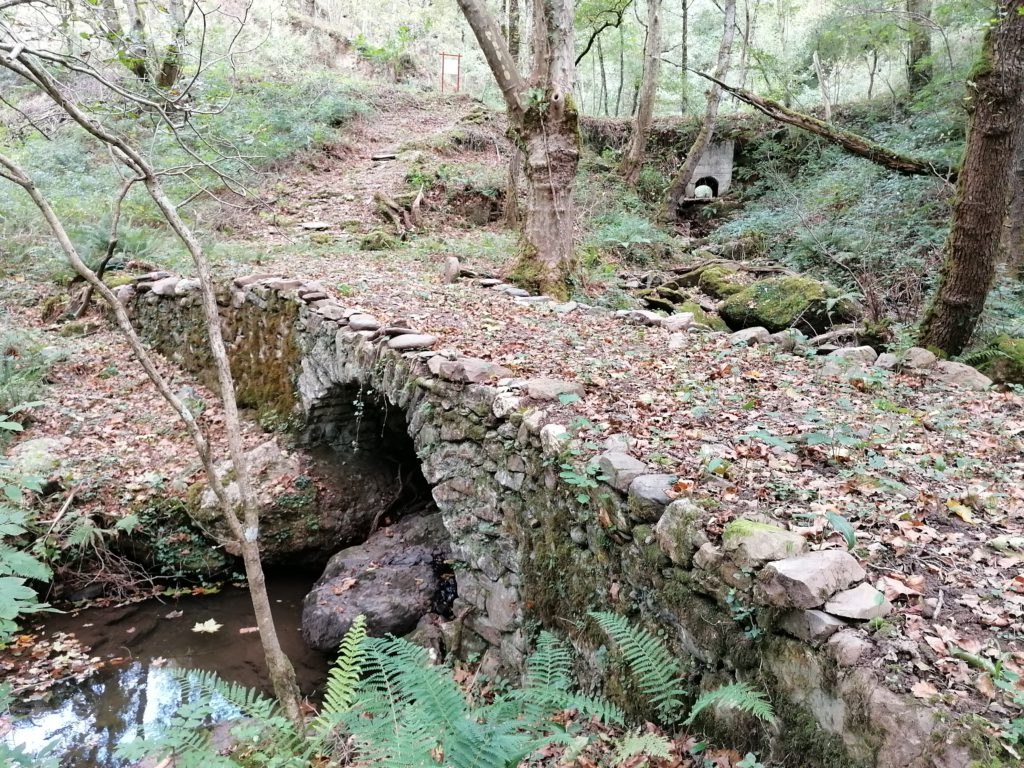
----------------------------------------------------------------------------------------------------
3º PANEL: THE MOUNTAIN HOUSE OF SARRIKU
You are walking along the so-called Pathway of Baztan, the same pathway that Karmen would have walked on so many times. In front of us, we come across the two highest mountains of Etxalar, Azkua and Arrano Komainta.
Contraband was very famous in these lands because the village of Etxalar borders with France on the north. The tradition of contraband surely left a mark on Karmen and it would be very useful in her future robbery lifestyle in Andalucía.
It would not have been very easy to be part of a band of thieves in Andalucía being a woman!
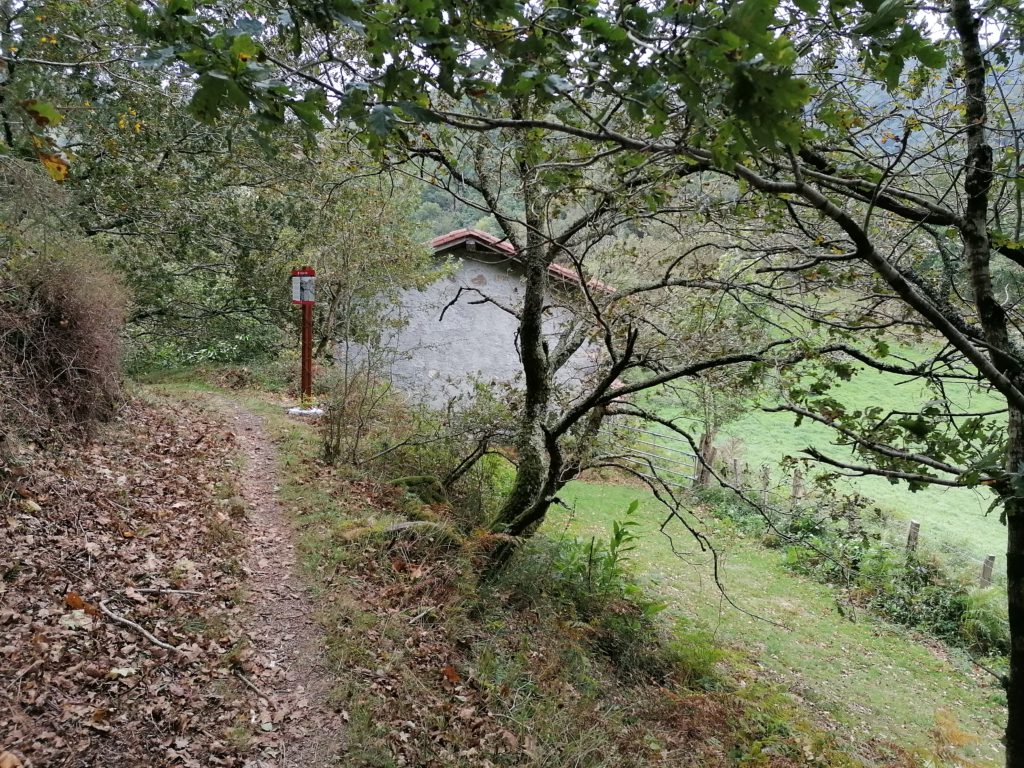
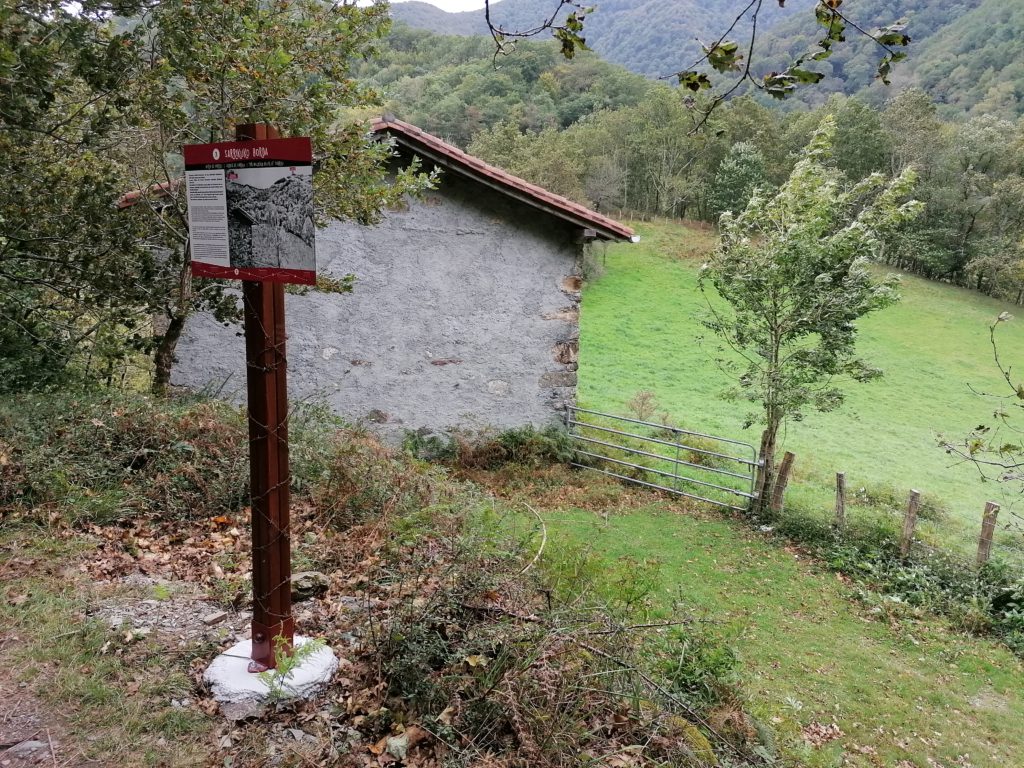
----------------------------------------------------------------------------------------------------
4º PANEL: THE ANCIENT BRIDGE OF SARRIKU
In 1760, the assemblies in Etxalar were organized every Sunday at noon at the Town Hall. On one occasion, the members of the assembly decided the following:
"We are building a bridge of stones in the gorge of Sarriku (it was made of wood before) because the big floods demolished it. In this way, merchants coming from Aoiz, Esteribar and Erro and crossing the valleys of Baztan will bring wheat, salt and wine to our market”
The lords of the houses, weavers, carpenters, blacksmiths, muleteers, doctors, farriers etc., crossed this bridge frequently. With the aim of selling their crops in the market, the most humble people also crossed this bridge. Gypsies, who went to the houses of the town asking for handouts, also used to use this path.
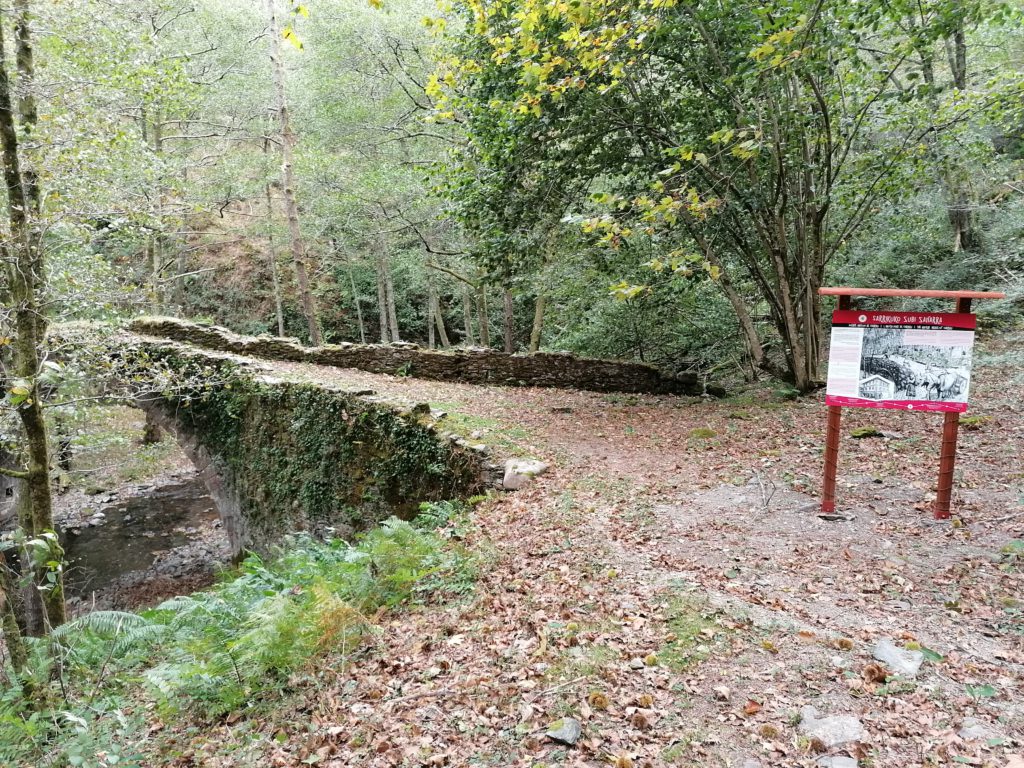
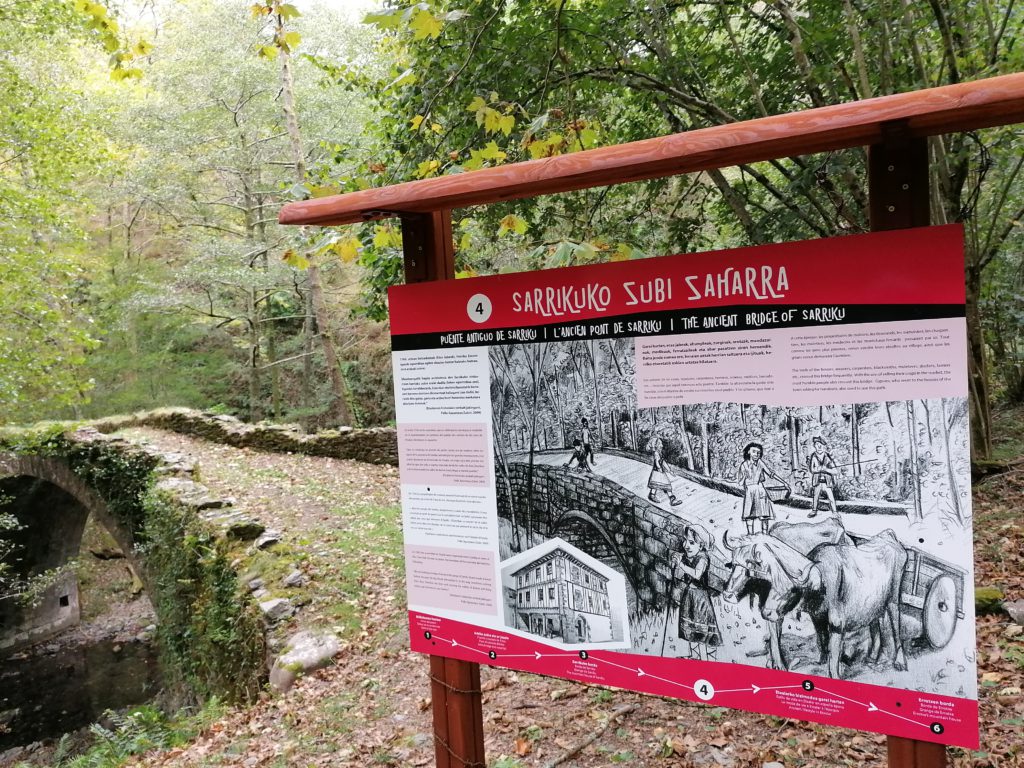
----------------------------------------------------------------------------------------------------
5º PANEL: ANCIENT LIFESTYLE IN ETXALAR
According to the elders, two ironworks places were differentiated. The first one was located on the other side of this mountain, next to the Erroiti River, under the Baztan mountain house (old walls are still visible). The second one, on the road from Venta de Etxalar to the town, below the road. The latter was known by the name of Etxalarsa.
Although at the time that Carmen lived were the last years of this industry, she would have seen the activity around the ironworks up close. She would have seen the charcoal squares of chestnut trees and beech trees everywhere, as well as workers and muleteers, breaking the silence that the forest now offers us.
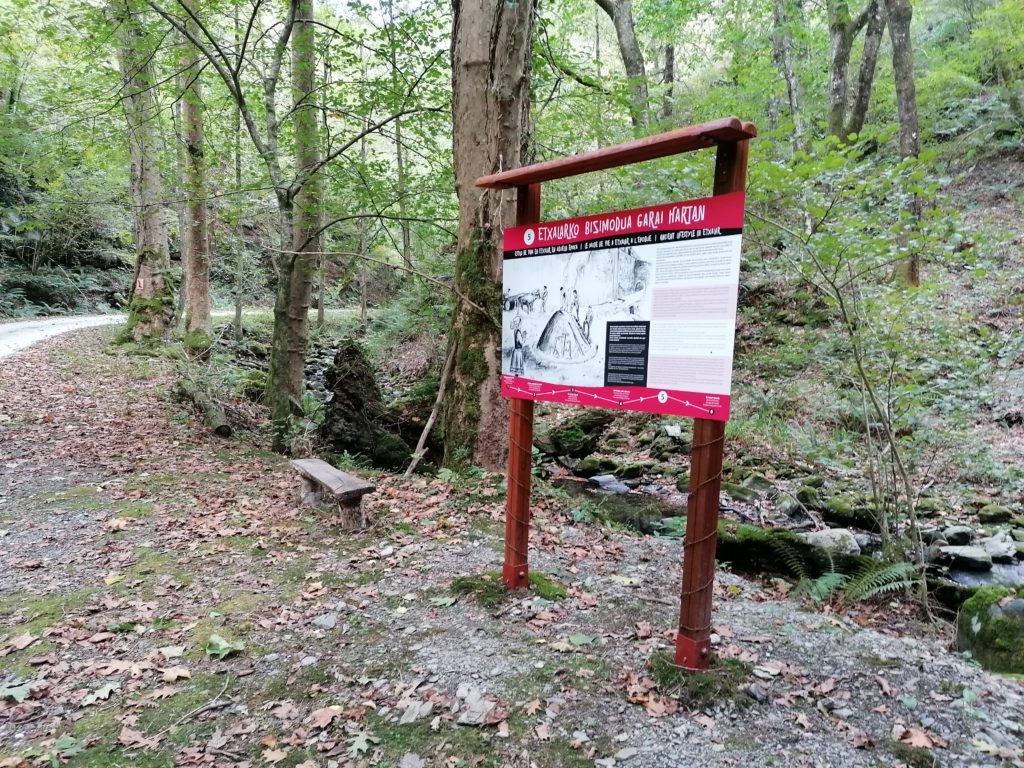

----------------------------------------------------------------------------------------------------
6º PANEL: ERROTXE´S MOUNTAIN HOUSE
This mountain house you see in front of you would have been Karmen's birthplace, called Errotxen borda. They say that one night during a flood, some gypsies kidnapped Karmen, taking her with them to Seville.
Surely it was the home of a humble family, a family made up of many brothers and sisters, who made their living thanks to the orchard and apple trees they had here.
We must realize the importance of chestnuts and apples at that time. They were called "Ezkortiak" the places where the chestnuts were kept in wicker baskets covered by earth, branches, fern and sacks that would protect them and that would not rot.
